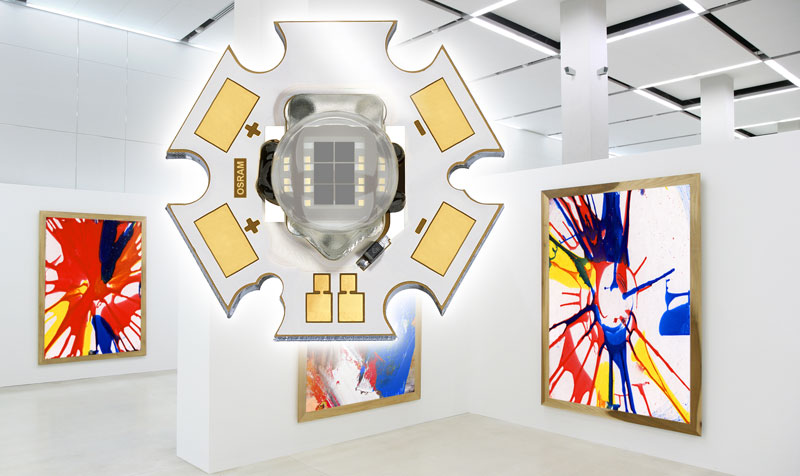Infrared OSTAR Lighting - open for external optics.
 Other News
Other News Subscribe to newsletter
Subscribe to newsletter
| 18 Apr 2009 |
With six powerful thin-film chips and a hemispherical lens the infrared OSTAR Lighting produces 3.5 W of optical output power at an operating current of 1 A. The beam angle and radiant intensity can be varied with standard secondary optics, available on the market.
The hexagonal honeycomb shape of this high-power component enables multiple IR LEDs to be combined to form a large space-saving matrix so that the output power can be increased many times. Its major applications include industrial lighting for camera-based surveillance systems such as CCTV and intelligent transportation systems (ITS).

The IR OSTAR Lighting LED is available in two wavelengths. At 850 nm the SFH4750 is an optimized synergy of maximum spectral sensitivity for CCD and CMOS cameras and suppressed visibility for the human eye. The SFH4751 is a version with a wavelength of 940 nm, to which the human eye is almost insensitive. It is used in applications where visibility of the light source cannot be tolerated.
“We were able to bring the infrared OSTAR Lighting quickly to market because we make use of synergies between the various technologies at the product development stage”, said Harry Feltges, Marketing Manager for Infrared Components at OSRAM Opto Semiconductors. “The package is the same as that of our popular white OSTAR Lighting, so our customers can make use of the relevant thermal and mechanical designs.”
With their high optical output both versions of the infrared OSTAR Lighting are good choices for industrial lighting illumination units for CCTV systems. These systems are used to improve public safety on the streets, at railway stations, at airports and in schools and also to protect museum exhibits against theft. These IR LEDs have a very long lifetime even in pulsed mode applications. They are therefore suitable as light sources for intelligent transportation systems such as traffic monitoring, toll systems and automatic number plate recognition (ANTR).




